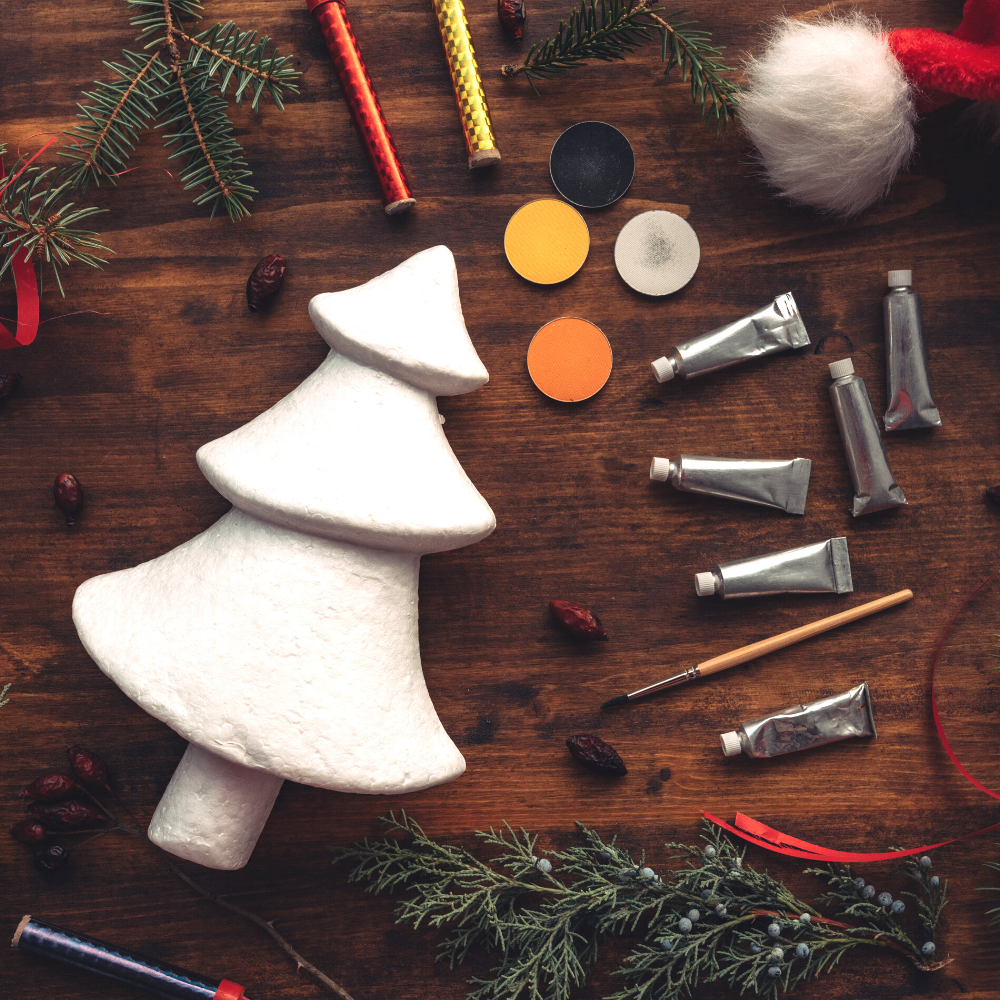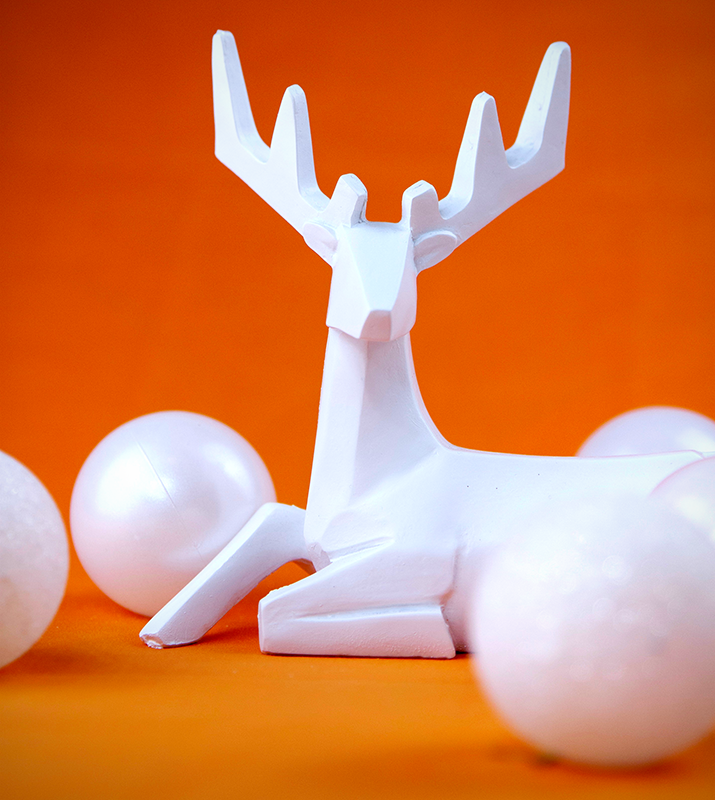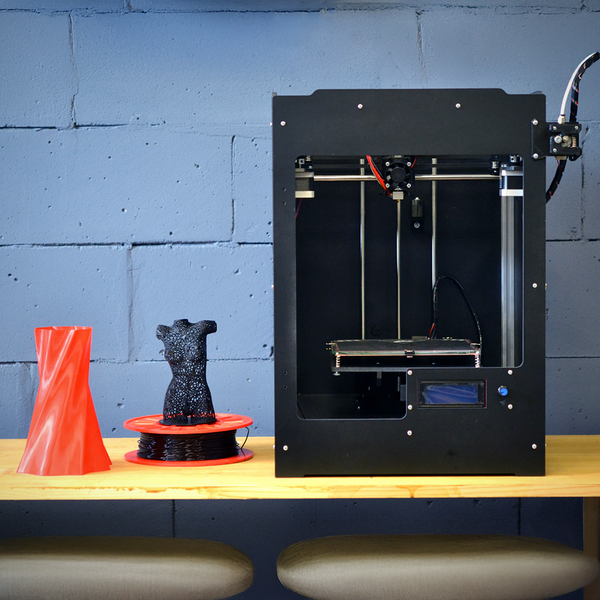Have you ever attempted to paint Styrofoam only to be left with a less-than-perfect result?
Styrofoam is becoming increasingly popular as a canvas for aspiring and professional artists alike.
Painting on Styrofoam is an amazing way to bring life and color to your creative projects.
The versatile and lightweight material offers endless possibilities for craft projects and party decorations, but achieving a smooth and lasting finish can be a challenge; getting paint to stick to its highly-maneuverable surface can be tricky.
Don't fret! We have all the tips and tricks you need to ensure that your Styrofoam artwork turns out perfectly every single time.
From preparing the surface properly, understanding the right type of paints and sealants available, through generated texture techniques, this guide will take you through everything you need to know for painted perfection!
Get ready to get creative and let's explore the world of painted perfection today!

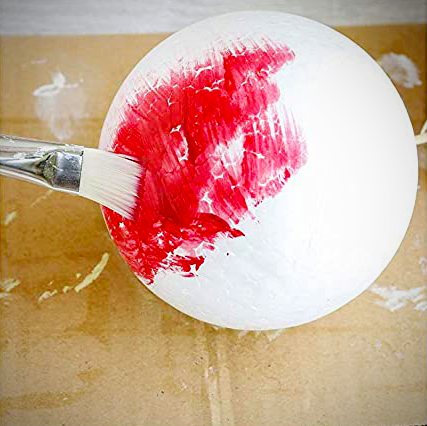
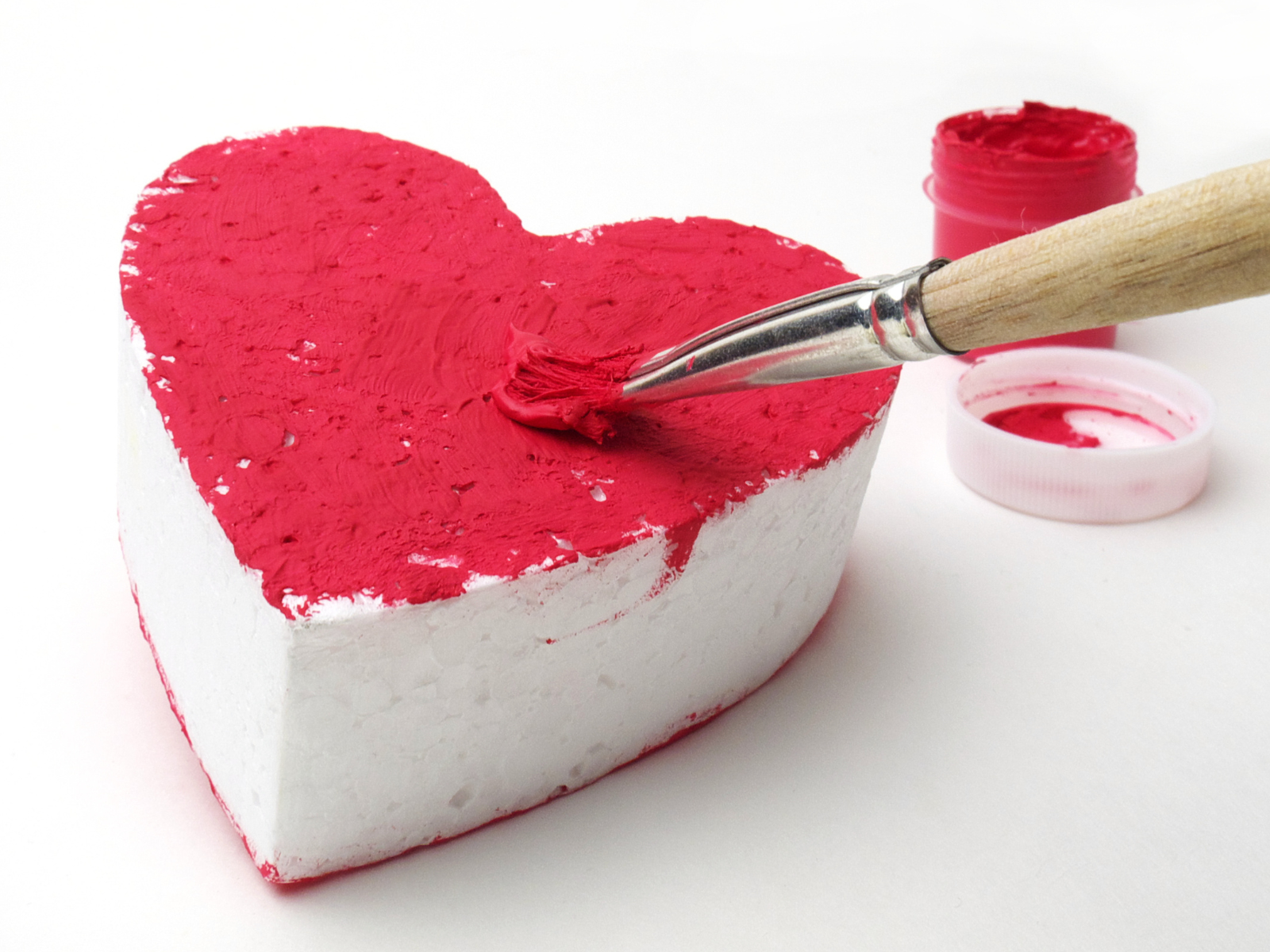
Key Takeaways
- Choose acrylic or foam-safe spray paint for Styrofoam projects.
- Prepare the surface by sanding and cleaning before priming and painting.
- Seal with a suitable sealant to protect the finish and extend its durability.
Choosing the Right Paint for Styrofoam
Choosing the right paint for Styrofoam plays a significant role in achieving a successful, long-lasting finish.
Certain types of paint may not adhere well to the foam or could even damage the material.
To avoid these issues, consider using acrylic paint, latex paint, or foam-safe spray paint – each of which offers unique benefits and compatibility with Styrofoam.
Acrylic paint is a popular go-to choice for Styrofoam projects.
It is easy to use, dries quickly, and offers a wide range of colors to choose from.
Additionally, it adheres well to Styrofoam and can be used without any special primers.
Latex paint is another suitable option for painting Styrofoam.
It also adheres well to the foam's surface and offers excellent coverage.
However, it may require a primer before application.
Foam-safe spray paint is specially designed for use on Styrofoam and other foam materials.
It provides a smooth and even finish without damaging the sensitive surface of the foam.
Keep in mind that it may require more than one coat to achieve full coverage.
Acrylic Paint
Acrylic paint, known for its water-based composition free of harmful chemicals, is often favored for Styrofoam projects as it doesn’t damage the foam.
This type of paint can be applied to various types of Styrofoam, such as balls and shapes, and works well for a wide range of craft projects.
Keep in mind that acrylic paint may not adhere as effectively as other options, so using a priming medium is not required when using acrylic paint on Styrofoam.
Sanding is a prerequisite for achieving a smooth painted surface on Styrofoam.
Use fine-grit sandpaper to eliminate any rough edges or protrusions on the surface.
This will ensure you have a perfect base for painting and will help the paint adhere more evenly, resulting in a better overall finish.
Once you’re ready to paint, apply several thin coats of acrylic paint, allowing each coat to dry completely before applying the next one.
Latex Paint
Latex paint is another water-based option suitable for Styrofoam, but it may not be as long-lasting as acrylic paint.
This is because latex paint may not withstand fluctuating temperatures as well as acrylic paint, which could lead to cracking or peeling over time.
However, latex paint can still provide a satisfactory finish for projects that will not be exposed to extreme temperature changes.
To further protect the painted Styrofoam, you can seal it with a suitable sealant, such as polyurethane or Mod Podge.
This will help to preserve the paint job and ensure it remains in good condition for longer periods of time.
Foam-Safe Spray Paint
If you prefer using spray paint, consider foam-safe spray paint – a type of paint specifically formulated for use on Styrofoam.
These spray paints provide even coverage without damaging the material, making them an excellent choice for projects like painting Styrofoam ceiling tiles or other intricate shapes.
When using foam-safe spray paint, it is important to choose a water-based paint and to follow the recommended technique for spray painting Styrofoam: hold the spray gun at a 90-degree angle and spray from the top, working in a downwards direction from the left to the right-hand side.
Employing a high-quality spray paint or airbrush machine offers several advantages when painting Styrofoam:
- Smoother end result
- Faster drying times
- Saves time and effort
- Ensures a professional-looking finish


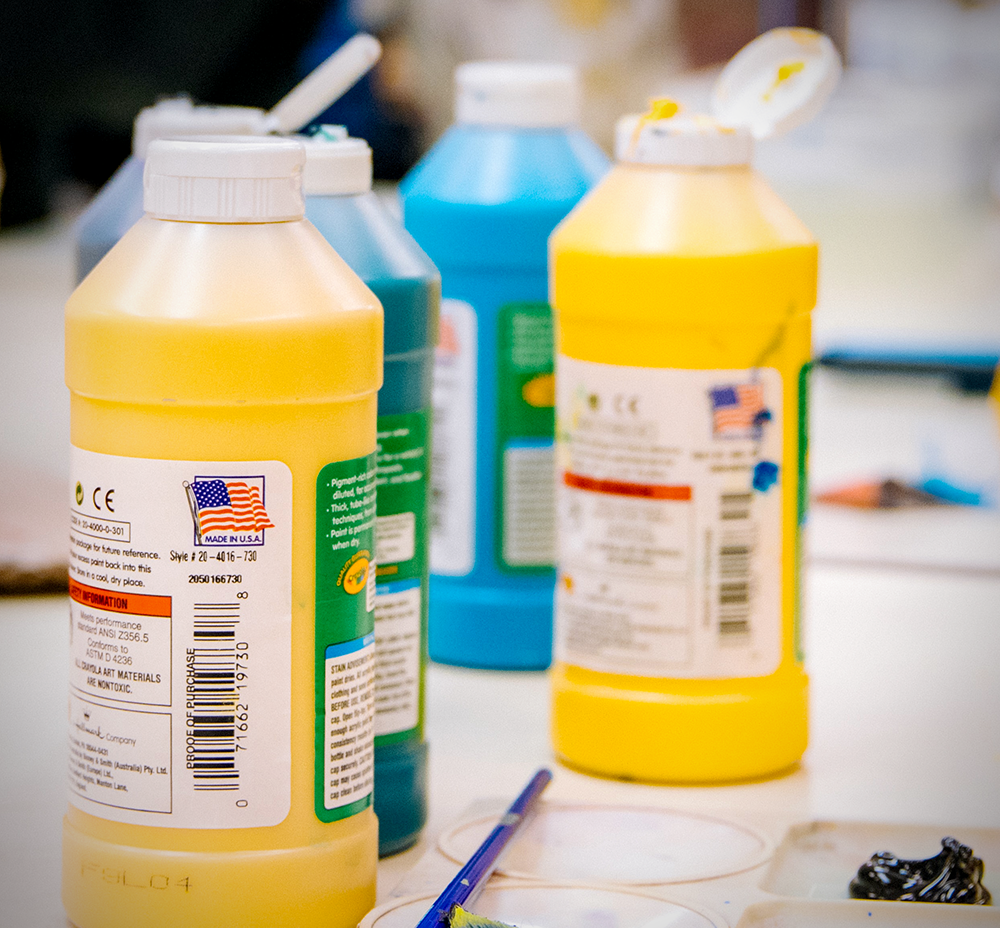
Preparing Styrofoam for Painting
Prior to painting, thorough preparation of the Styrofoam surface is of utmost importance.
This will ensure optimal paint adherence and a smooth finish.
By prepping the surface correctly, you can prevent any imperfections or bubbles from appearing on your finished project.
Begin by sanding the surface to create a uniform texture and then clean it with a damp cloth to eliminate any dirt or debris.
Once the surface is clean and dry, you’re ready to move on to priming and painting.
Sanding the Surface
Achieving a smooth surface for paint adherence involves a key step: sanding the Styrofoam surface.
This process helps to remove any rough or uneven areas on the surface, creating a more uniform texture that will result in a better overall finish.
In addition to improving paint adherence, sanding can also shape, round, and smooth the material, making it easier to work with for various projects.
To sand the surface of Styrofoam, you can use a sanding block, sandpaper, or an electric sander.
Sandpaper is available in multiple grits, ranging from coarse to fine, and should be selected based on the desired finish.
When sanding, it is essential to use light, even strokes and to sand in the same direction as the grain of the Styrofoam.
Be sure to wear a dust mask and safety glasses during the sanding process to protect against dust particles and debris.
Cleaning the Surface
Post-sanding, cleaning the Styrofoam surface to eliminate any lingering dust or debris is a significant task.
This will ensure that the paint adheres properly and results in a smooth, even finish.
Use a damp cloth to gently wipe the surface, being careful not to damage it.
Give the Styrofoam ample time to dry up. Don’t proceed to the next step until it is completely dry..
Investing adequate time in Styrofoam surface preparation can notably enhance the quality and longevity of the paint job.
A clean, smooth surface will help the paint adhere more effectively, resulting in a finished product that looks professional and lasts for years to come.
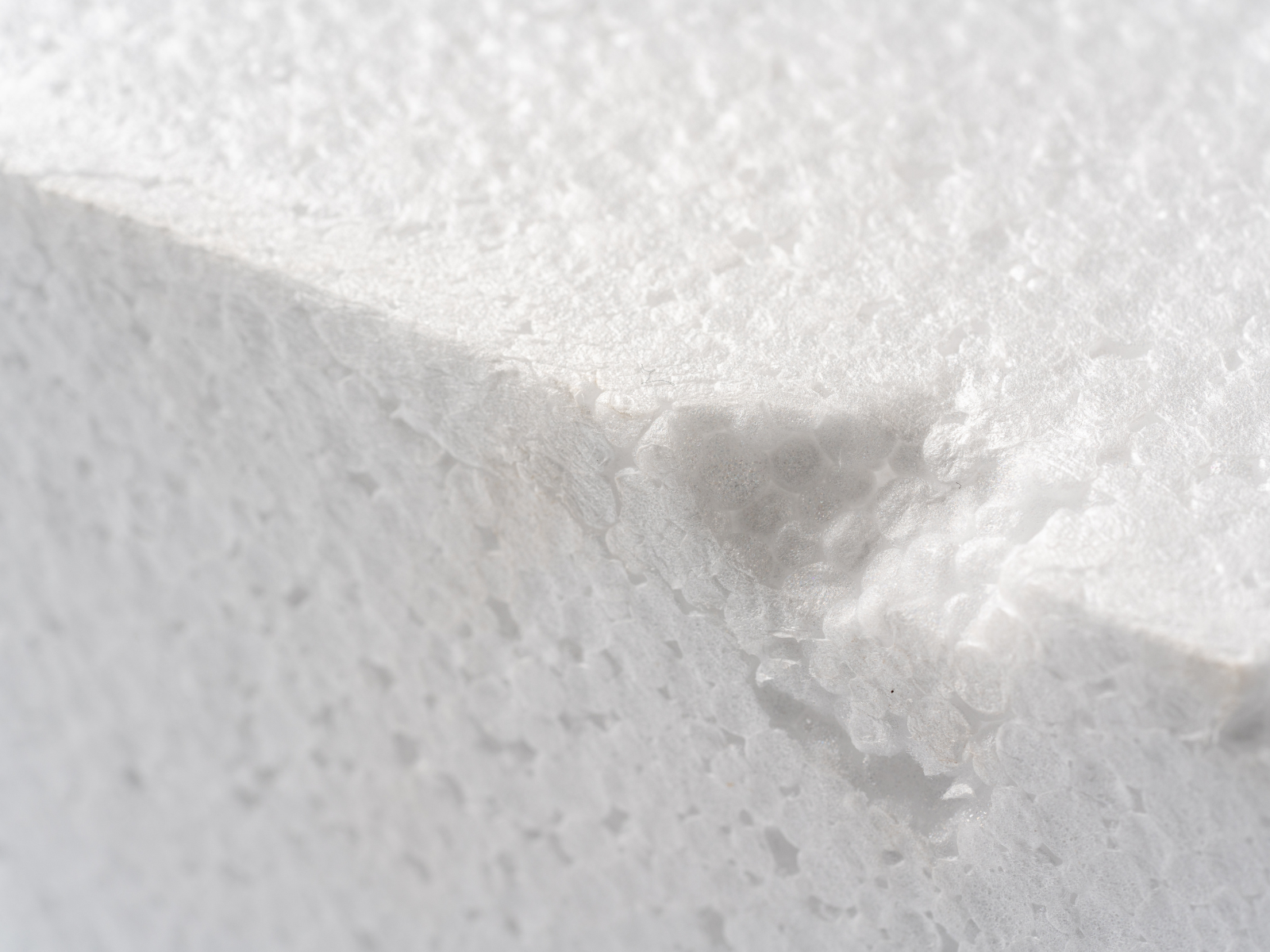
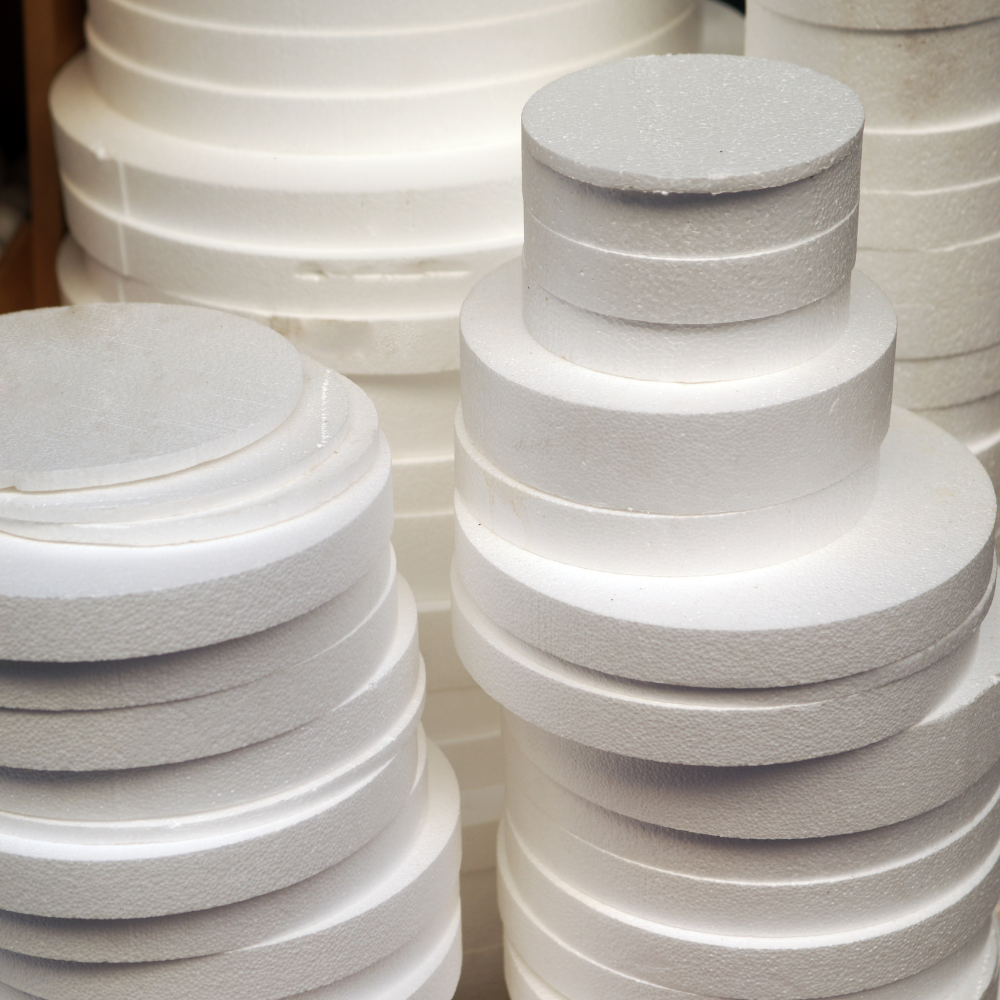
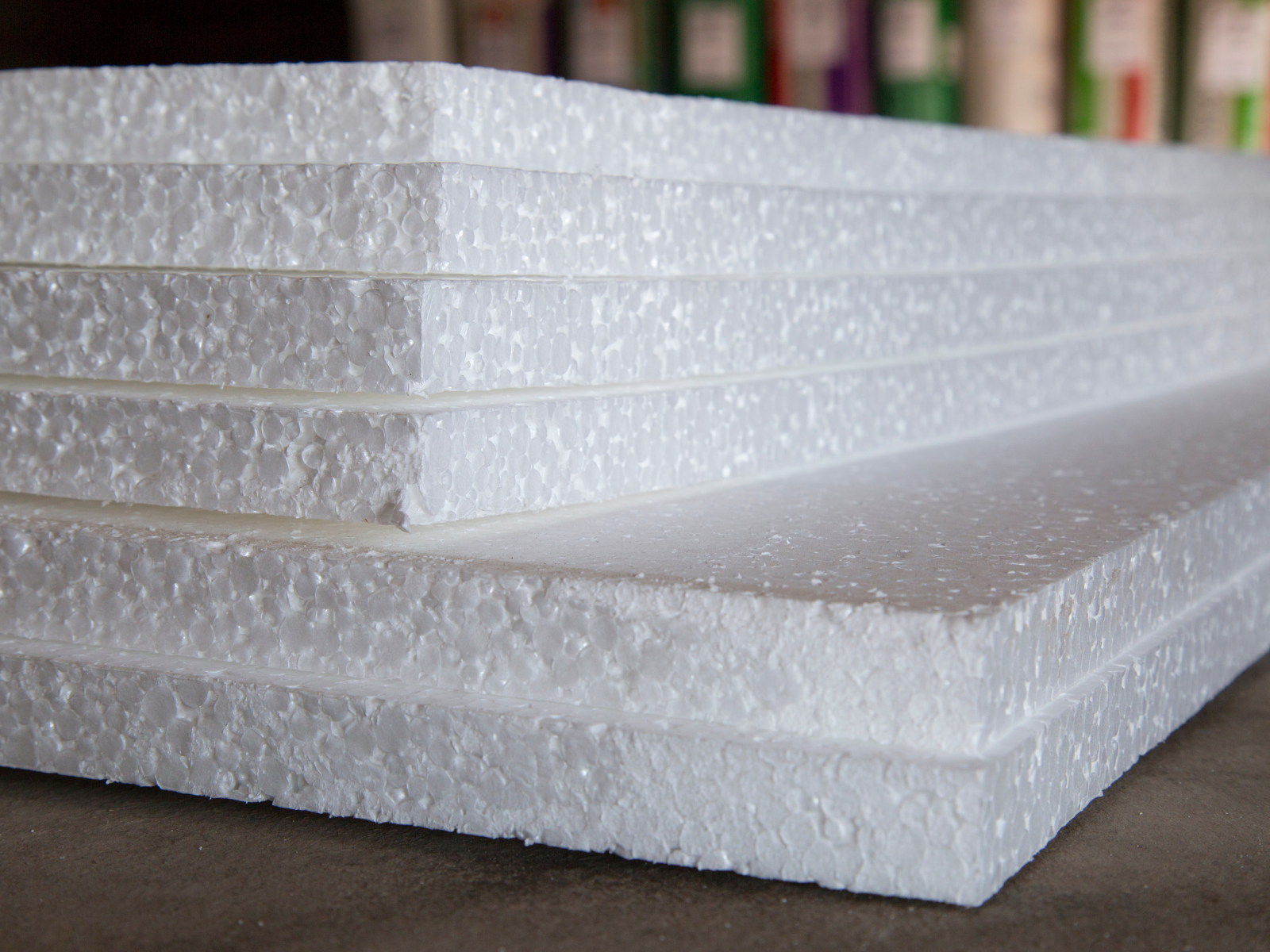
Priming Styrofoam for Better Adherence
A more even finish and improved paint adherence can be achieved by priming the Styrofoam before painting.
While not always necessary, priming can be especially beneficial when using a paint that doesn’t adhere well to Styrofoam, such as latex paint or certain spray paints.
Priming can also help to seal the porous surface of the Styrofoam, creating a smoother painting experience.
To prime Styrofoam, you will need a primer that is specifically formulated for foam materials.
Using a brush or roller, apply an even layer of primer over the entire surface of the Styrofoam.
Allow it to dry completely before moving on to the next step.
Once primed, your Styrofoam will be ready for painting.
Types of Primers
Selecting a primer specifically designed for foam materials is a crucial step when choosing a primer for Styrofoam.
This will ensure that the primer adheres properly and does not damage the Styrofoam surface.
Some options include water-based, chemical-free primers or foam-specific products like Foam Finish.
By using a primer specifically formulated for Styrofoam, you can improve the longevity and durability of your paint job, ensuring that your project will look great for years to come.
Additionally, a proper primer can help to create a smoother finish, making it easier to achieve the desired look for your Styrofoam project.
Application Techniques
Applying primer to Styrofoam is a simple process that can make a big difference in the final result of your paint job.
Begin by using a foam brush or roller to evenly apply the primer to the Styrofoam surface.
Be sure to cover all areas, including any edges or corners, to ensure a consistent finish.
Allow time for the primer to dry.
This will ensure that the first coat of paint adheres correctly.
This typically takes about one hour, but drying times can vary depending on the type of primer used and the environmental conditions in your workspace.
Investing time in properly priming your Styrofoam surface can significantly enhance the quality and longevity of your paint job, and using a paint tray can help you achieve that.



Painting Techniques for Styrofoam
Now that your Styrofoam surface is properly prepared and primed, painting can commence!
There are several techniques and tips that can help you achieve the perfect painted finish on your Styrofoam project.
With various painting techniques for Styrofoam, including using paint brushes, applying multiple coats, and being mindful of drying times, you can create a beautiful finished product.
Following these tips can help you achieve a beautiful, lasting finish on your Styrofoam project, whether it’s a simple Styrofoam ball, a collection of Styrofoam forms, or a more complex design.
Using Brushes
To ensure an even application without damaging the surface, use foam brushes or rollers while applying paint to Styrofoam.
Brushes offer precise control over the application of paint, making it easier to paint intricate details or small areas on Styrofoam surfaces.
Furthermore, brushes can help achieve a smooth and even finish on Styrofoam, minimizing the appearance of brush strokes.
To apply paint with a brush, follow these steps:
- Dip the foam brush or roller into the paint, being careful not to overload it with too much paint.
- Gently and evenly apply the paint to the Styrofoam surface, taking care to avoid any visible brush strokes or uneven coverage.
- Allow each coat of paint to dry completely before applying the next one, as recommended in the previous section.

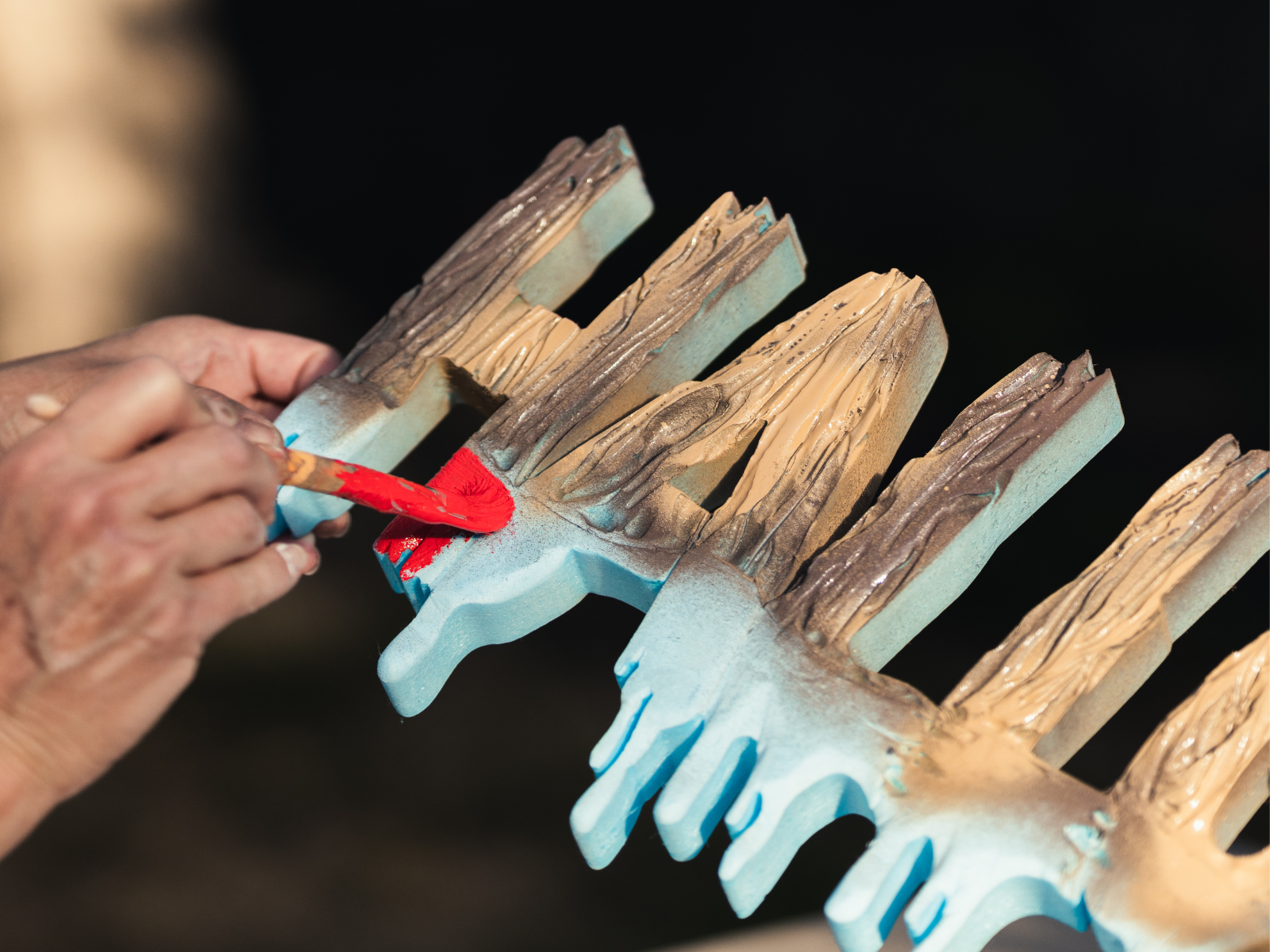

Applying Multiple Coats
Applying multiple coats of paint to your Styrofoam project is key to achieving full coverage and a smooth finish.
This not only ensures that the paint adheres properly but also helps to create a consistent, professional-looking finish.
Here’s how to apply multiple coats of paint to your Styrofoam project:
- Start by applying a thin, even layer of paint.
- Allow the first coat to dry completely before applying the next coat.
- Repeat this process until you have achieved the desired coverage and finish.
By following these steps, you can ensure that your Styrofoam project is beautifully painted and ready to display.
Depending on the type of paint you’re using and the desired finish, you may need to apply two or three coats of paint to achieve optimal surface coverage.
Be sure to adhere to the drying times between coats to avoid any smudging or unevenness in the paint application.
Drying Times
A successful Styrofoam painting project necessitates careful observation of drying times between coats.
If you don’t allow each coat of paint to dry completely before applying the next one, you risk smudging or creating an uneven paint application.
The drying time for paint on Styrofoam typically ranges from 30 minutes to 2 hours, depending on the type of paint.
To determine if the paint is dry, gently touch the surface with your fingertip.
If the paint is no longer tacky and feels dry to the touch, it is safe to apply the next coat.
Adhering to the recommended drying times can help ensure a smooth, even finish and avoid complications in the painting process.
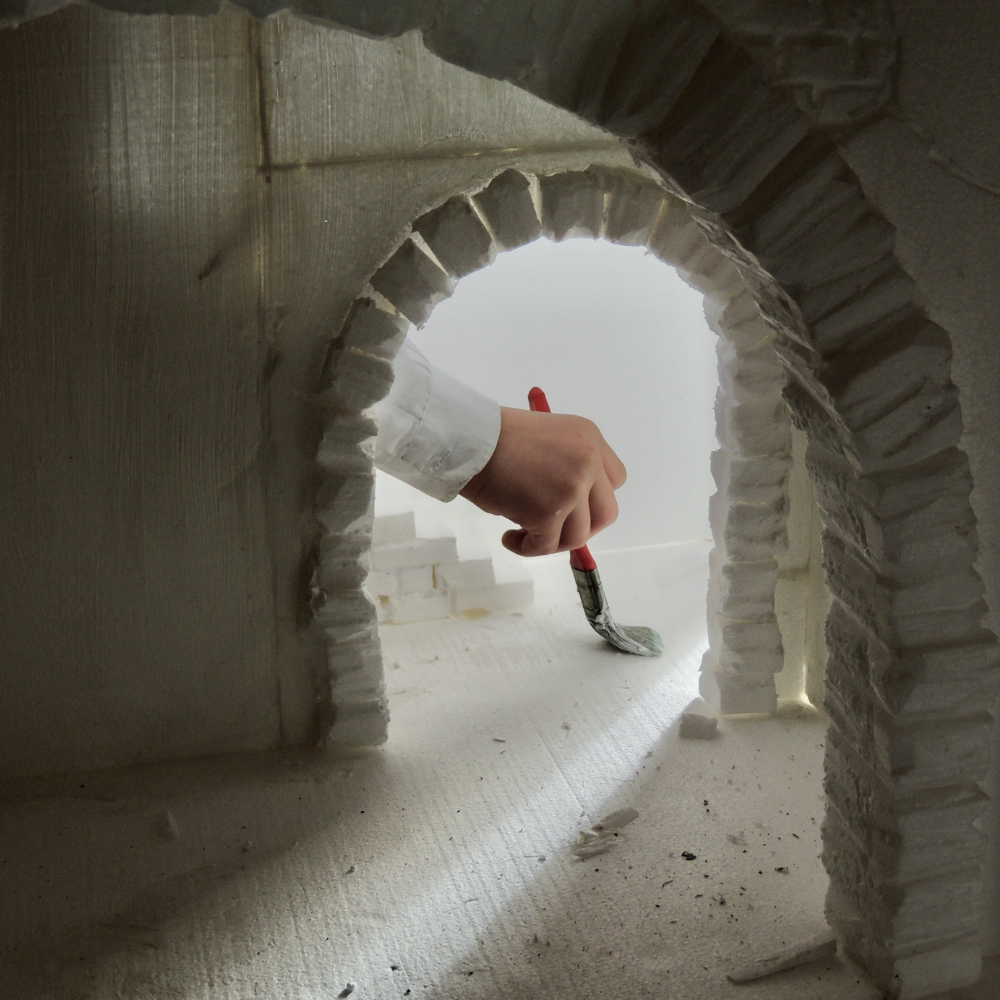
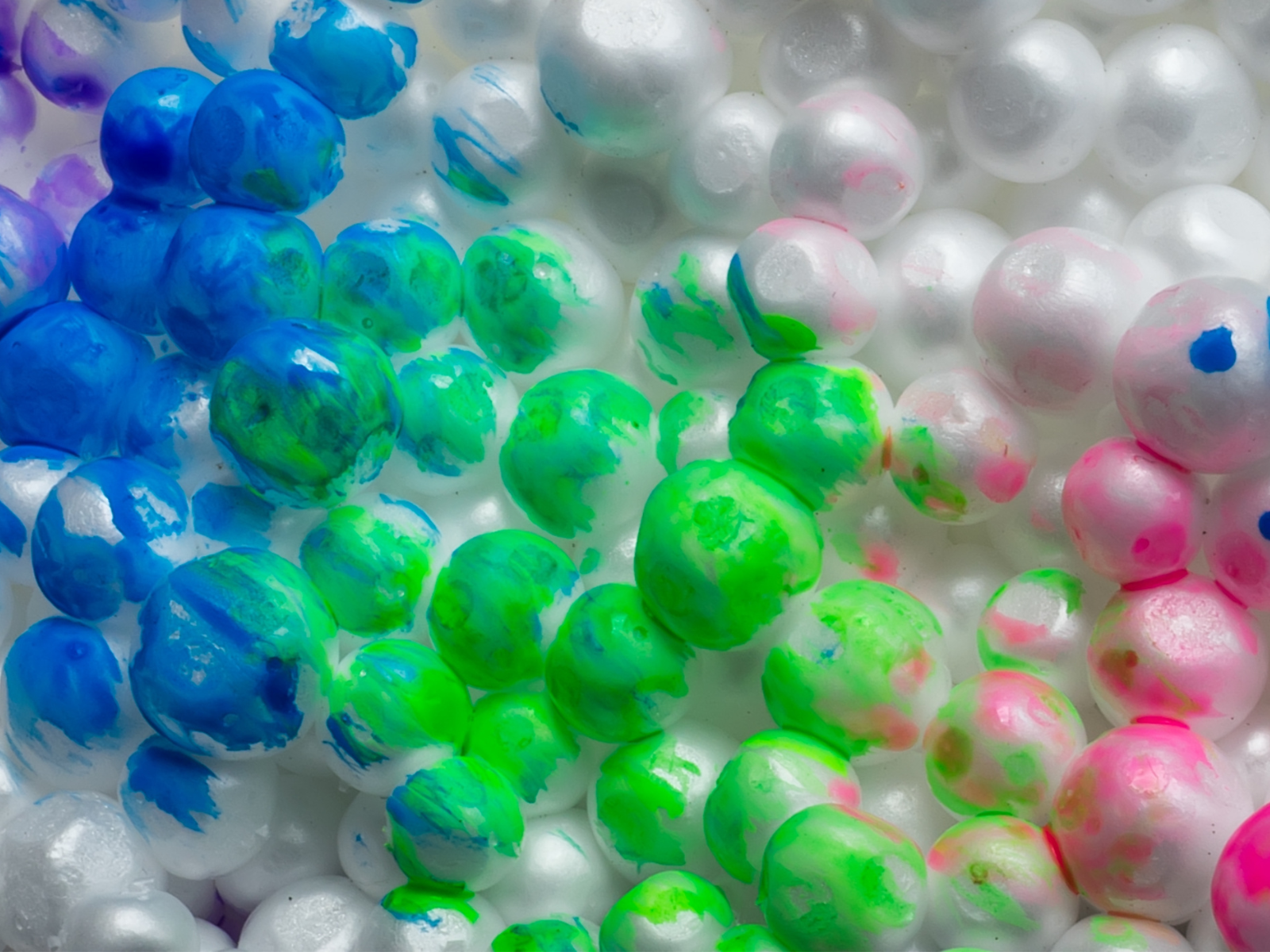
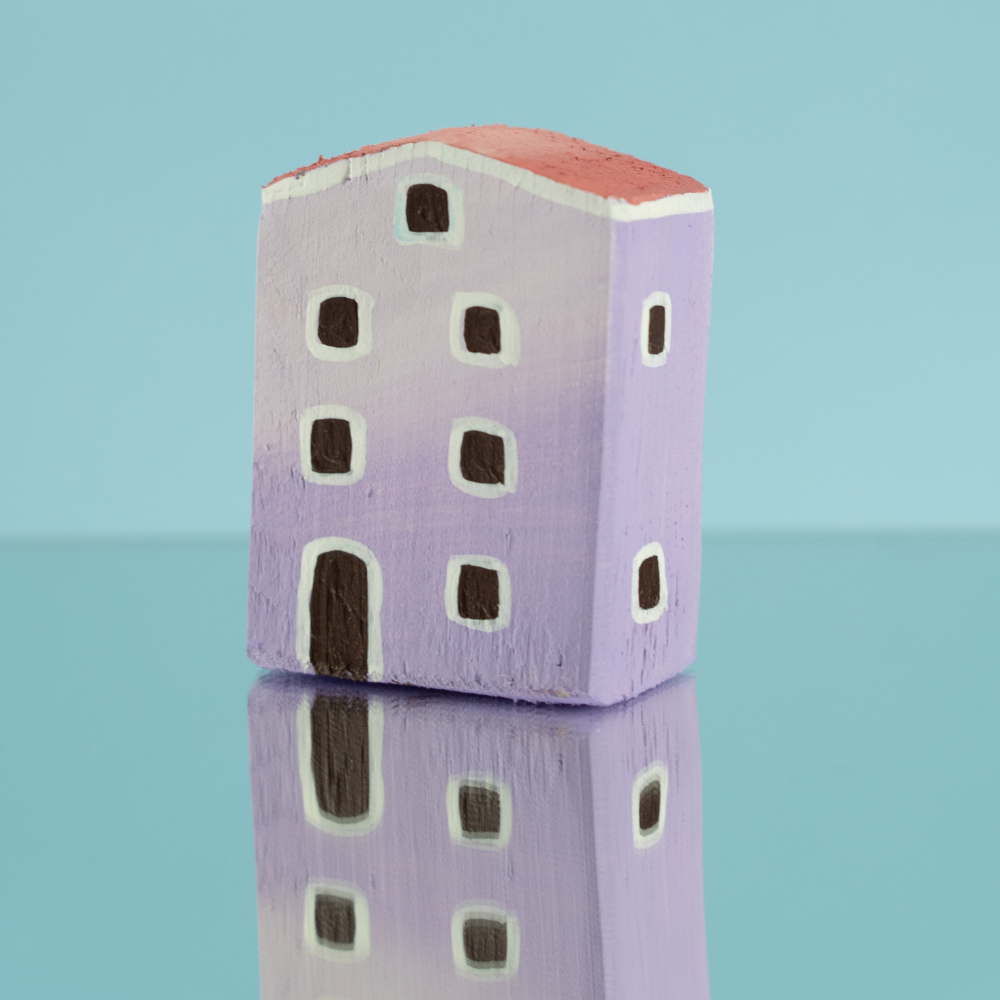
Sealing and Protecting Painted Styrofoam
Sealing and protecting the surface after painting your Styrofoam project is a must to ensure the paint job’s longevity and durability.
In this section, we’ll explore the types of sealants available for Styrofoam and discuss the best techniques for applying them to your painted surface.
Types of Sealants
There are various sealants available for protecting surfaces when you spray paint Styrofoam, each with its own unique benefits and compatibility.
Some options include:
- Polyurethane sealant
- Magicfly bulk acrylic paint and/or sealant
- Silicone sealer
- Water-based coating
- Waterproof wood glue
- PVA and water mixture
- Epoxy resin
- Polyurethane coating
- Polyurethane resin
- Seal Styrofoam with paint sprayer compatible sealants, including tempera paint
In the process of choosing a sealant, consider factors such as the type of surface to be sealed, the desired finish, and the sealant’s durability.
Be sure to read the instructions on the sealant packaging to ensure it is suitable for use on Styrofoam.
Application Techniques
Applying sealant to your painted Styrofoam project is a simple process that can greatly enhance the durability and appearance of your finished piece.
Begin by using a foam brush or roller to evenly apply the sealant to the surface, taking care to cover all areas, including any edges or corners.
Give the sealant sufficient time to dry.
Once that is done, you can start working on your painted Styrofoam project.
The drying time for sealants can vary depending on the type of sealant used and the environmental conditions in your workspace.
Investing time to properly seal and protect your painted Styrofoam will result in a lasting, beautiful piece that remains in great condition for years.



Common Styrofoam Painting Mistakes to Avoid
Avoiding common mistakes is crucial for achieving a successful, long-lasting paint job on your Styrofoam project.
One such mistake is using the wrong type of paint, such as spray paint not specifically designed for foam, which can cause your paint to dissolve or not adhere properly.
Another mistake is not properly preparing the surface of the Styrofoam by sanding and cleaning it before painting.
Be sure to wear the right safety gear when using spray paint or other hazardous materials.
This includes items such as gloves, a mask and eye protection.
Work in a well-ventilated area to prevent the inhalation of fumes and minimize discomfort.
Lastly, clean up any spills or drips immediately to avoid damage to your work area and project.
Steering clear of these common mistakes can lead to a successful, long-lasting paint job on your Styrofoam project.
With the right preparation, materials, and techniques, you can transform your Styrofoam into a beautiful and durable piece of art.
Frequently Asked Questions
Thinking about painting Styrofoam for the first time?
Styrofoam is a great medium for various projects, but painting it can be tricky.
Here are some common questions and answers to help you get started.
What kind of paint sticks to Styrofoam?
For best results, use water-based acrylic or latex paint on Styrofoam to achieve a long lasting finish.
Make sure to use multiple coats of the paint with a foam brush and allow each coat to dry completely before adding additional ones.
Avoid using solvent-based paints, such as spray paint, as these can dissolve the Styrofoam.
How do you prep Styrofoam for painting?
To properly prep Styrofoam for painting, start by sanding the edges to smooth them out, then apply two to three coats of paint, and finish with a protective wax layer.
Additionally, you can prime the surface with a foam-specific primer for better paint adherence and finish.
Do you need primer to paint Styrofoam?
Applying a primer before painting Styrofoam helps ensure an even coat and prevent paint from chipping off after drying.
Acrylic craft paints are suitable for use on Styrofoam without a primer, though one should be applied for the best results.
If using spray paint, a primer is highly recommended to avoid damaging the Styrofoam surface.
Can you use Mod Podge on Styrofoam?
Yes, you can use Mod Podge on Styrofoam.
It is a trademarked brand of closed-cell extruded polystyrene foam manufactured by DuPont for thermal insulation and water barrier.
Mod Podge can be used as a sealant to protect and preserve painted or decorated Styrofoam surfaces.
However, it is not recommended to use Mod Podge as a glue for attaching materials to Styrofoam, as it may not provide sufficient adhesion.
So, always follow the instructions on the Mod Podge label for best results.
Can you spray paint on Styrofoam?
While it is possible to spray paint on Styrofoam, it is not recommended.
Spray paint can melt or dissolve the foam, resulting in a disfigured surface.
If you do choose to use spray paint, make sure it is specifically designed for use on foam surfaces.
It is always best to test the spray paint on a small, inconspicuous area of Styrofoam before applying it to the entire surface.
How can I ensure a smooth finish when painting Styrofoam?
To ensure a smooth finish when painting Styrofoam, sand and clean the surface before applying multiple thin coats of paint.
Using a foam brush or roller can also help to achieve an even and brush stroke-free finish.
Allowing each coat of paint to dry completely before applying the next one is also essential for achieving a smooth surface.
Another tip is to avoid using too much pressure or force when painting, as this can create unevenness in the application.
With proper preparation and technique, you can achieve a beautiful and smooth finish on your painted Styrofoam project, whether it be Styrofoam balls, forms, or any other creative design.
Therefore, it is essential to follow these tips and techniques closely for the best results.


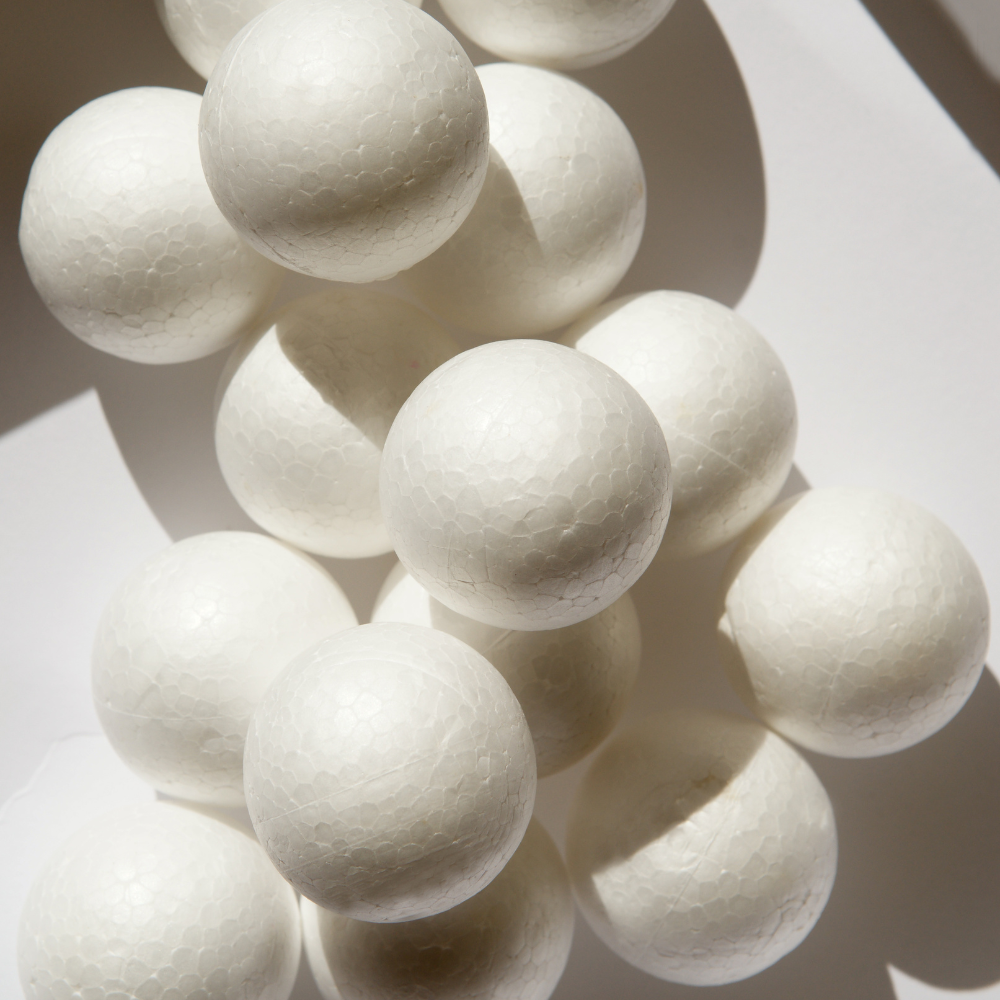
Painted Perfection with Styrofoam
Painting on Styrofoam can be a fun and creative process, resulting in beautiful, long-lasting pieces.
By choosing the right paint, properly preparing the surface, using suitable painting techniques, and sealing and protecting the finished product, you can achieve a beautiful finish that will last for years to come.
Whether you’re working on a small craft project or a large party decoration, following these tips and techniques will ensure your painted Styrofoam masterpiece looks professional and stands the test of time.
By investing time and effort into proper preparation and execution, you can achieve painted perfection with Styrofoam.
Ready to get started?
Grab your materials, put on your safety gear, and let your creativity take over as you bring your Styrofoam project to life with a beautiful paint job.
So, go ahead and unleash your creative side with Styrofoam painting!
After all, the possibilities are endless when it comes to this versatile material!
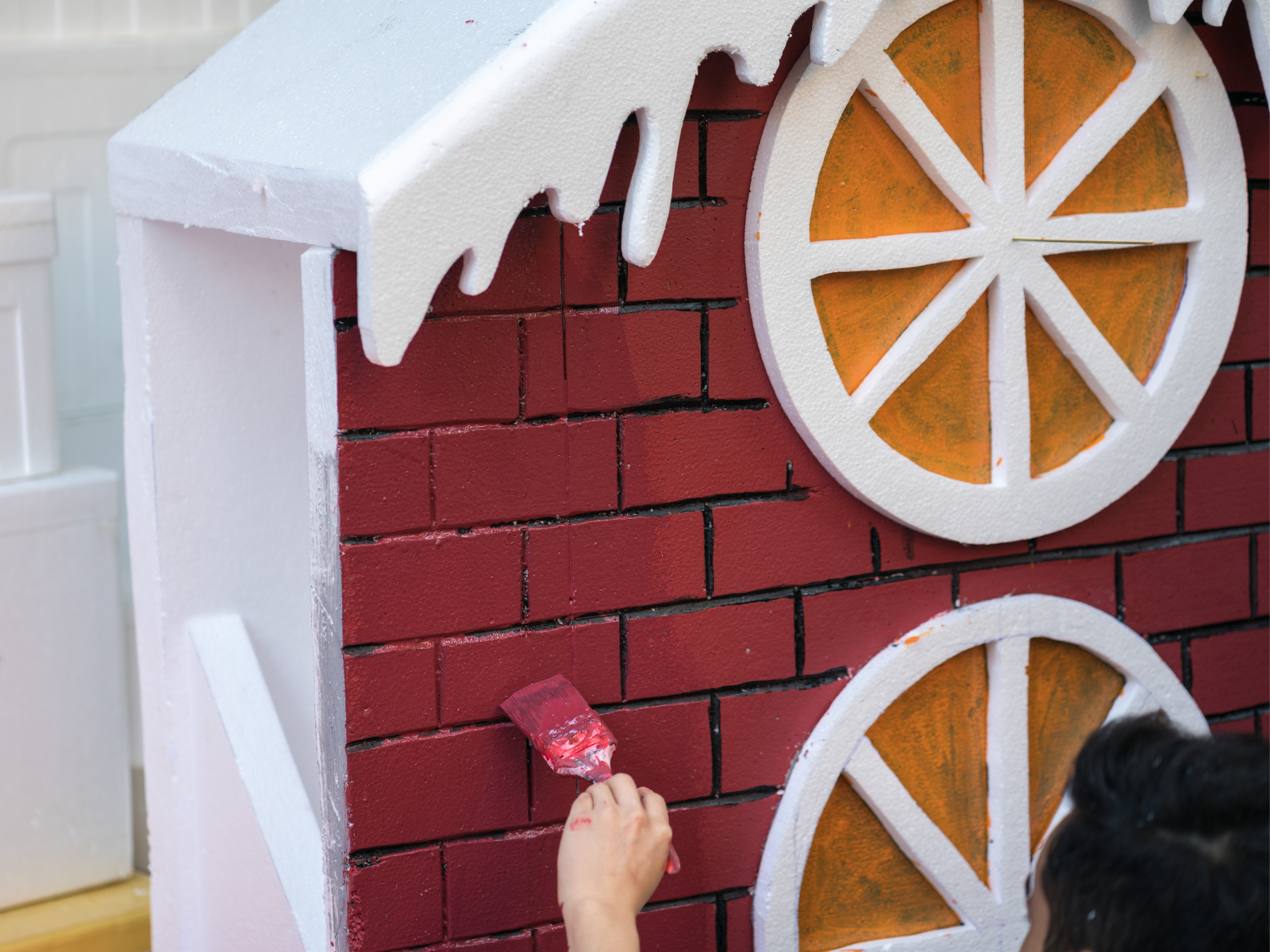


Eager to get crafty with styrofoam? Check out Living the Crafty Life's video!
Want even more content about creativity and art?
Be sure to check out all of our creative chronicles!
Ready to start painting?
Check out some of our other articles:
-Painting sets
